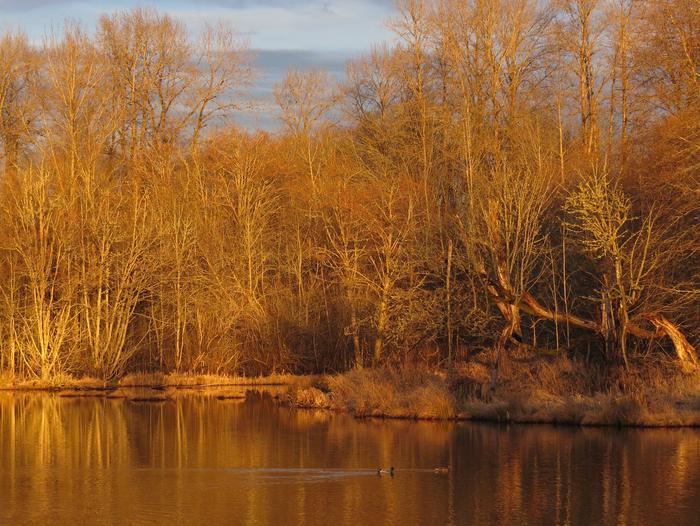Billy Frank Jr. Nisqually National Wildlife Refuge
Fish and Wildlife Service, Washington.
Billy Frank Jr. Nisqually National Wildlife Refuge is located where the freshwater of the Nisqually River meets the saltwater of south Puget Sound, creating the Nisqually River Delta. The delta is a biologically-rich and diverse area that supports a variety of habitats including the estuary, freshwater wetlands and riparian woodlands. It is considered the last unspoiled major estuary in Puget Sound. The Nisqually Delta has been designated as a National Natural Landmark because of its national significance as one of the best examples of this kind of coastal salt marsh system remaining in the North Pacific. Nisqually Refuge is famous for the more than 275 migratory bird species that use the refuge for migration, wintering, or breeding. The refuge provides rearing and migration habitat for steelhead trout and several salmon species, and habitat for a variety of threatened and endangered species. The Black River Unit, southwest of Olympia, provides high quality habitat for Coho and Chinook salmon, steelhead trout, migratory birds, and a diversity of other species. The Black River is one of the largest undisturbed freshwater wetland systems remaining in western Washington. Situated between Olympia and Seattle and within 100 miles of more than 4 million people, Nisqually Refuge is visited each year by more than 100,000 people who come to enjoy and learn about these sensitive natural resources. The refuge provides environmental education programs for 8,000 school children every year.
Nearby Activities
- Boating
- Environmental Education
- Fishing
- Hiking
- Historic & Cultural Site
- Hunting
- Interpretive Programs
- Photography
- Visitor Center
- Wildlife Viewing
Directions
Nisqually National Wildlife Refuge is located 8 miles northeast of Olympia, Washington.
•From Interstate 5 southbound, take exit 114. Make a right at the traffic light, go under the freeway and make a right into the Refuge. Follow the entrance road to the two public parking lots.
•From Interstate 5 northbound, take exit 114. Make a left at the stop sign, go under the freeway and make a right into the Refuge. Follow the entrance road to the two public parking lots.

